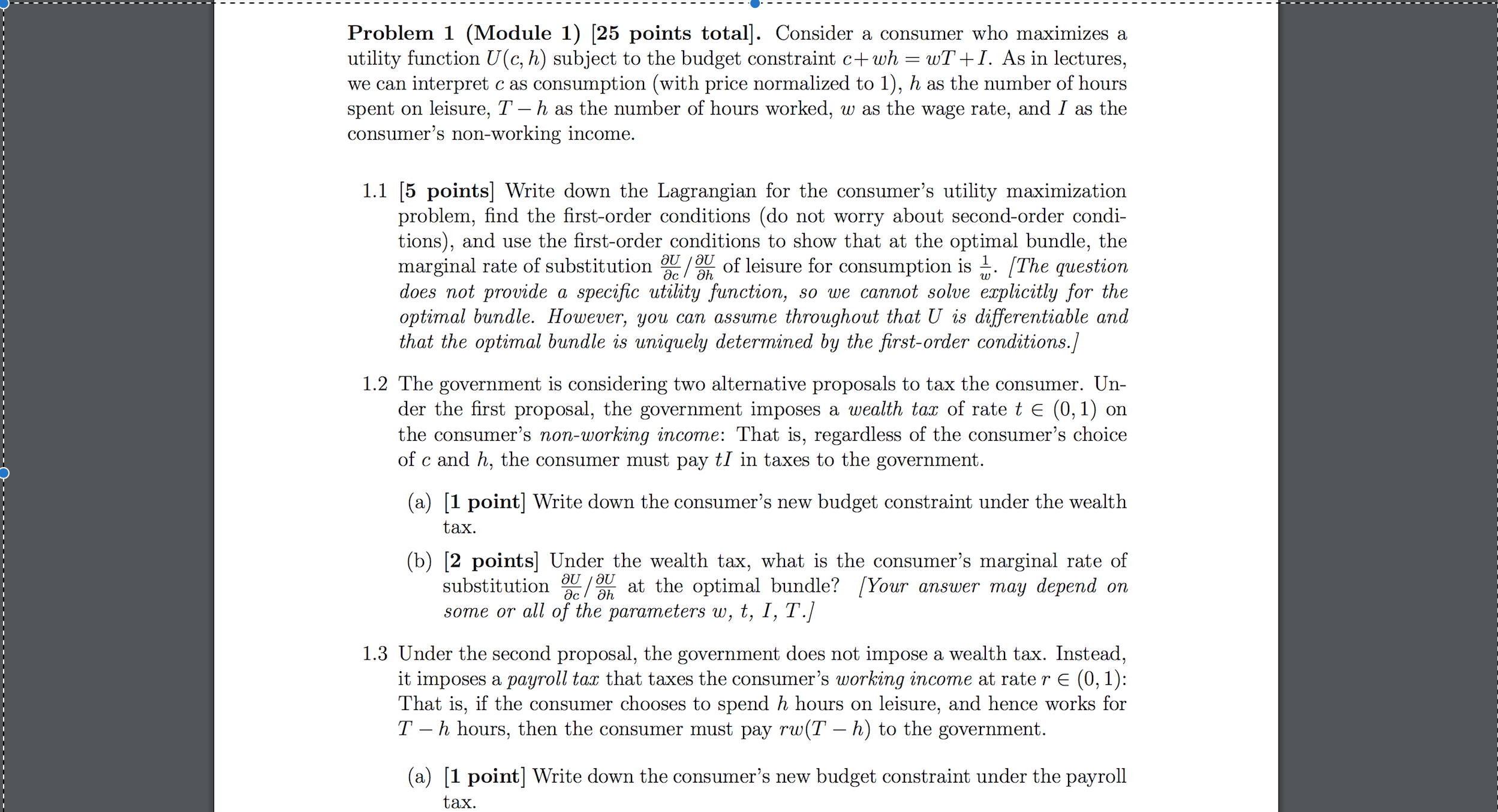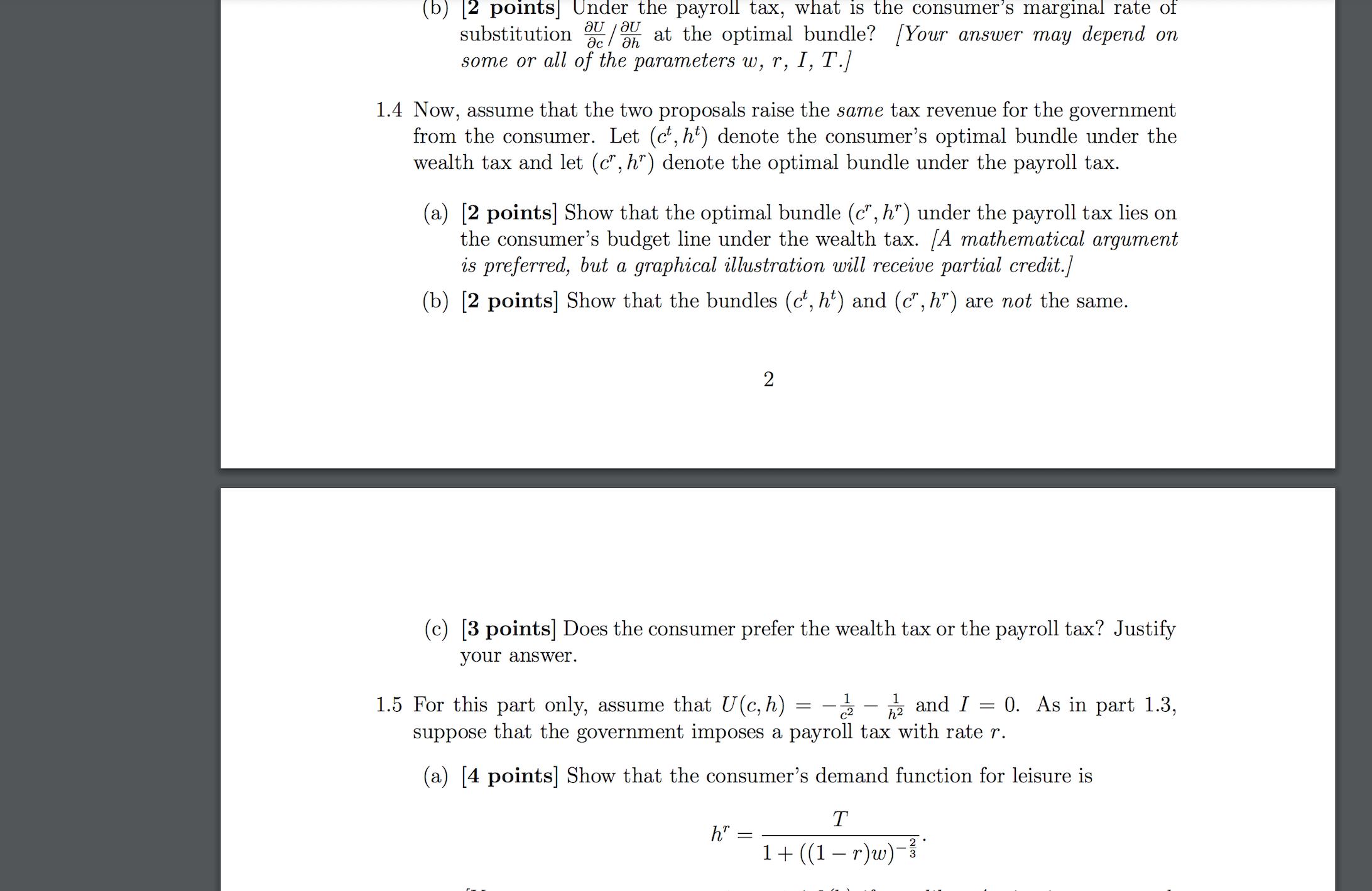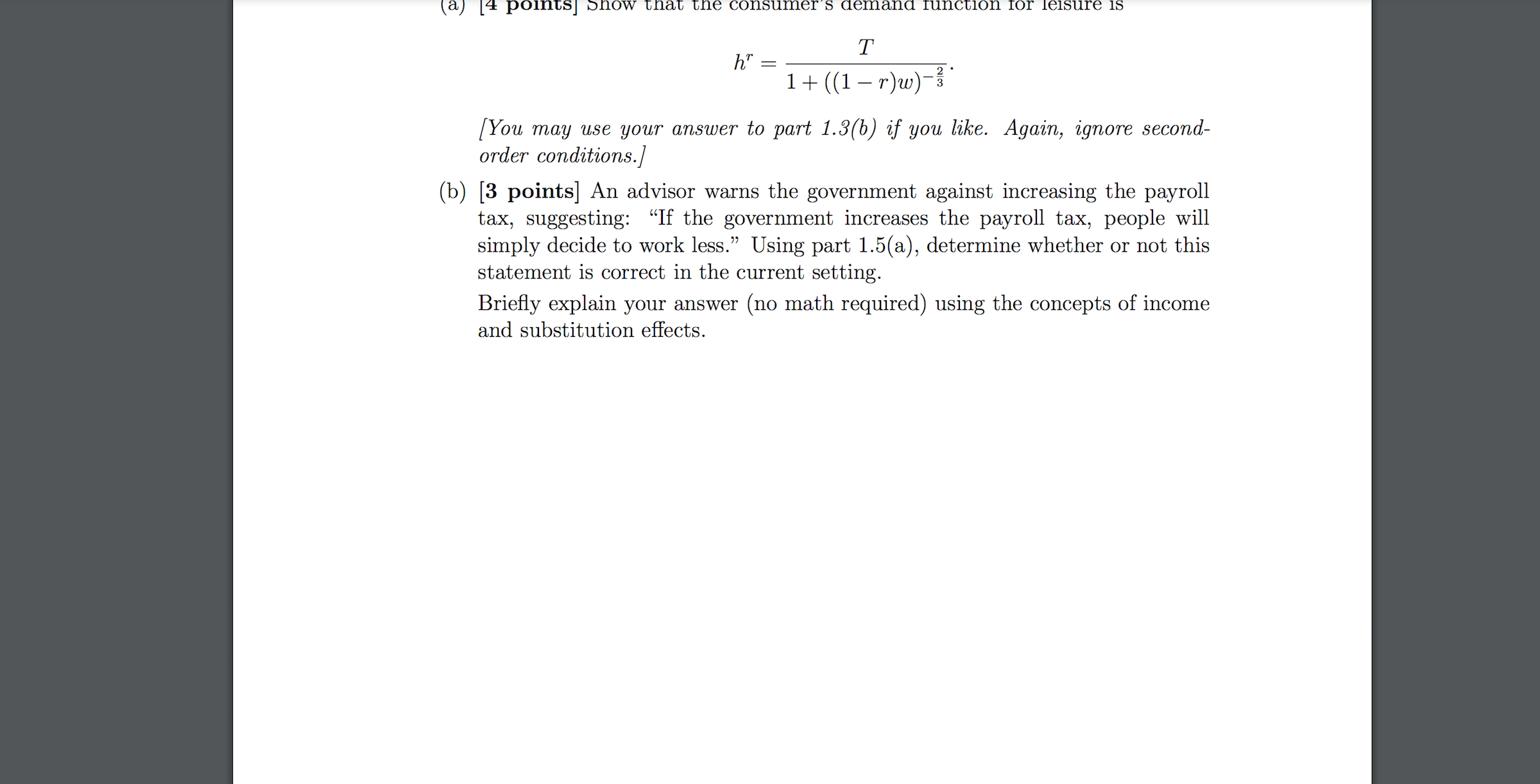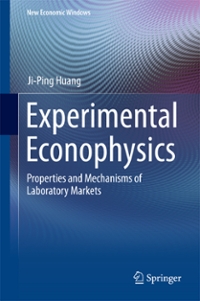Need help with this question.
Problem 1 (Module 1) [25 points total]. Consider a consumer who maximizes a utility function U (c, h) subject to the budget constraint c+wh = wT+I. As in lectures, we can interpret c as consumption (with price normalized to 1), h as the number of hours spent on leisure, T h as the number of hours worked, w as the wage rate, and I as the consumer's nonworking income. 1.1 [5 points] Write down the Lagrangian for the consumer's utility maximization problem, nd the rstorder conditions (do not worry about secondorder condi tions), and use the rst-order conditions to show that at the optimal bundle, the marginal rate of substitution 22 23 of leisure for consumption is i [The question does not provide a specic utility function, so we cannot solve explicitly for the optimal bundle. However, you can assume throughout that U is di'erentiable and that the optimal bundle is uniquely determined by the rstorder conditions. ] 1.2 The government is considering two alternative proposals to tax the consumer. Un der the rst proposal, the government imposes a wealth tax of rate t 6 (0,1) on the consumer's non-working income: That is, regardless of the consumer's choice of c and h, the consumer must pay H in taxes to the government. (a) [1 point] Write down the consumer's new budget constraint under the wealth tax. (b) [2 points] Under the wealth tax, what is the consumer's marginal rate of substitution '22 21,: at the optimal bundle? [Your answer may depend on some or all of the parameters 11;, t, I, T.] 1.3 Under the second proposal, the government does not impose a wealth tax. Instead, it imposes a payroll tax that taxes the consumer's working income at rate r E (0, 1): That is, if the consumer chooses to spend h hours on leisure, and hence works for T h hours, then the consumer must pay rw(T h) to the government. (a) [1 point] Write down the consumer's new budget constraint under the payroll tax. (b) [2 points] Under the payroll tax, what is the consumer's marginal rate of substitution 216] gZ at the optimal bundle? [Your answer may depend on some or all of the parameters 11), r, I, T.] 1.4 Now, assume that the two proposals raise the same tax revenue for the government from the consumer. Let (c', h') denote the consumer's Optimal bundle under the wealth tax and let (CT, hr) denote the optimal bundle under the payroll tax. (a) [2 points] Show that the optimal bundle (CT, h") under the payroll tax lies on the consumer's budget line under the wealth tax. [A mathematical argument is preferred, but a graphical illustration will receive partial credit. / (b) [2 points] Show that the bundles (ct, ht) and (cl, hr) are not the same. (c) [3 points] Does the consumer prefer the wealth tax or the payroll tax? Justify your answer. 1.5 For this part only, assume that U(c, h) = Ci2 i2 and I = 0. As in part 1.3, suppose that the government imposes a payroll tax with rate r. (a) [4 points] Show that the consumer's demand function for leisure is T If: 1 + ((1 r)w) (a) (4 points] Show that the consumer's demand function for leisure is T h" = 1+ ((1 -r)w) -3 You may use your answer to part 1.3(b) if you like. Again, ignore second- order conditions./ (b) [3 points] An advisor warns the government against increasing the payroll tax, suggesting: "If the government increases the payroll tax, people will simply decide to work less." Using part 1.5(a), determine whether or not this statement is correct in the current setting. Briefly explain your answer (no math required) using the concepts of income and substitution effects









